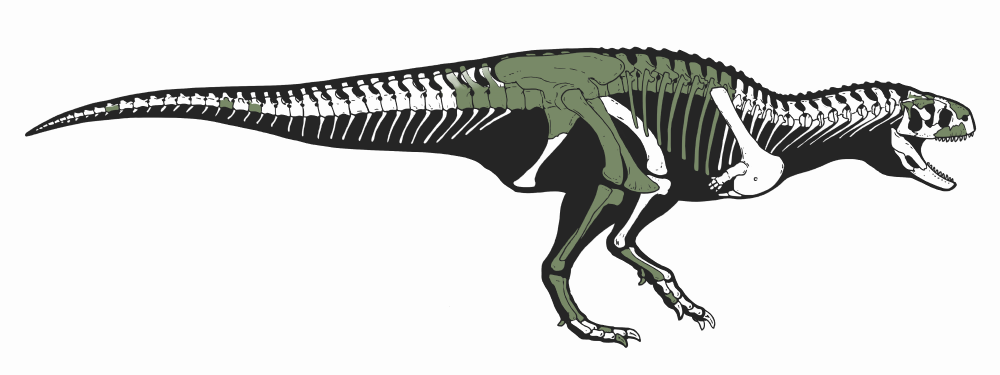Behold, the tiny arms of a new species of abelisaurid dinosaur, Koleken inakayali. Retrieved from La Colonia Formation in Patagonia, it dates back 70 million years and has an impressively miniature set of arms. Think T. rex’s were mini? You ain’t seen nothing yet.
The new tiny-armed species looks similar to the iconic “meat bull” Carnotaurus, made famous from Jurassic World and that love scene in Prehistoric Planet. Koleken is different, however, both in having unique skull features and a small size, and lacking the frontal horns seen on Carnotaurus.
Where it stands up to the meat bull is in its ridiculously tiny arms, a common trait among the abelisaurids. Carnotaurus was an efficient predator that’s thought to have used its bizarre tiny arms and specially adapted shoulder girdle to twirl flashes of blue when trying to impress a mate, but we don’t yet know what Koleken used theirs for.
The partial Koleken skeleton retrieved from La Colonia Formation included several skull bones, almost all of its back bones, a complete hip, some tail bones, and two almost-complete legs. It’s not a bad haul considering that scientists recently described what might have been one of the largest animal ever to live from just a bit of jaw.
The new species name is derived from the language of the Tehuelche people of Central Patagonia, with Inakayal being the name of one of the last Tehuelche leaders. It lived around 70 million years ago, putting it in the same timeline as the miniature titanosaur Titanomachya gimenezi that was announced last month.
The discoveries were unearthed as part of a project looking into the end of the “age of dinosaurs” in Patagonia, which is funded by the National Geographic Society. The project is focusing on the last 15 million years of the Cretaceous Period, a period of geological time that’s historically been better studied in northern locales.

The partial Koleken inakayali skeleton retrieved in Patagonia.
Image credit: © Gabriel Lio
Already, the project is providing insights into the landscape of dinosaurs in Patagonia during the Late Cretaceous Epoch, and this discovery adds to the argument that La Colonia Formation is of global significance as a dinosaur-bearing rock.
“This finding sheds light on the diversity of abelisaurid theropods in Patagonia right before the mass extinction event,” said Explorer Diego Pol in a statement emailed to IFLScience. “Our study also analyzes the evolution of abelisaurids and their relatives through time, and identifies pulses of accelerated rates of skull evolution in the Early Cretaceous. It expands what we know about abelisaurids living in this area during the Cretaceous Period and shows that they were more diverse than previously understood.”
The study is published in the journal Cladistics.
Source Link: 70-Million-Year-Old Dinosaur Is A New Species, And It's Got Ridiculously Tiny Arms